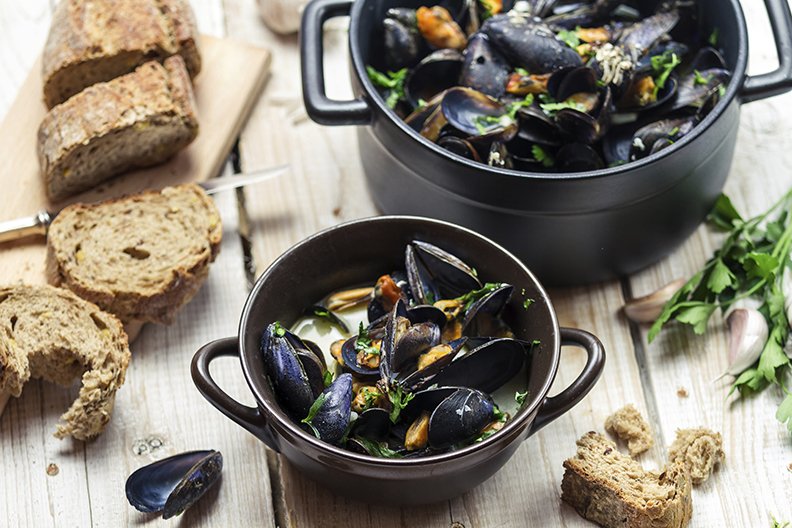Fresh seafood is a true culinary pleasure. While diners enjoy bivalves, crustaceans and gastropods at all times of the year, summer is traditionally associated with eating many of these mostly hard-shelled creatures. For Boulder culinary school students, a little background and some tips on using these three types of land- and sea-dwelling creatures in dishes can provide useful cooking inspiration.
Bivalves
There are many bivalves regularly eaten around the world, from clams and scallops to mussels and oysters. Plenty of less-common bivalves exist as well, and some are eaten in smaller numbers where they are plentiful enough to catch, cook and consume.
What makes a bivalve a bivalve? The technical answer involves their scientific classification. In practical terms, these creatures are defined by a lack of internal bones – meaning they’re easily eaten whole – a relatively flat body and a hinged shell.
Bivalves can be eaten in a wide variety of ways, with techniques from raw consumption to deep frying and preparation in chowders all common. Looking for some inspiration? Consider these popular approaches to cooking bivalves:
- The classic New England clambake – which can include lobster and shrimp, both crustaceans – mixes seafood and other ingredients common to the region into a delicious and filling meal. The Food Network offered a delectable version of the recipe from well-regarded chef Ina Garten.
- Seared scallops are a well-known and popular restaurant dish. Consider this recipe and additional scallop guidance from Serious Eats.
- Fried clams are a favorite at waterfront seafood shacks wherever clams are plentiful. Leite’s Culinaria has a recipe to replicate that taste.

Crustaceans
Crabs, lobsters, crayfish and shrimp are among the most commonly consumed crustaceans. These animals all live near or in water and are characterized by their hard shells, mostly soft interiors and branching limbs – like the claw of a lobster or crab.
Crustaceans also benefit from a number of tried and true preparations and presentations. Here are just a few to consider:
- The lobster roll has seen a culinary resurgence in recent years, making inroads far past the coasts where these creatures are caught. Bon Appetit offered a great lobster roll recipe to keep on hand.
- The Italian roots of shrimp scampi are on full display in this version of the dish from The New York Times Cooking section.
- The crawfish gumbo from Louisiana Cookin’ offers some strong regional flavors.
Gastropods
Snails and slugs are the common names for members of the Gastropoda class. These soft, usually small creatures may or may not have a shell and can live on land or in water depending on species. While most slug types are only emerging as a possible regular food source, snails have long been served as a delicacy. A few recipes to make the most of gastropods include:
- This recipe for sauteed sea snails from the Cooking Channel is simple to prepare and a major crowd pleaser.
- Escargot, in the shell with herb butter, is a time-tested dish that requires more involved preparation but pays off in the end. Consider this recipe from Food Network and private chef Jesse Brune.


